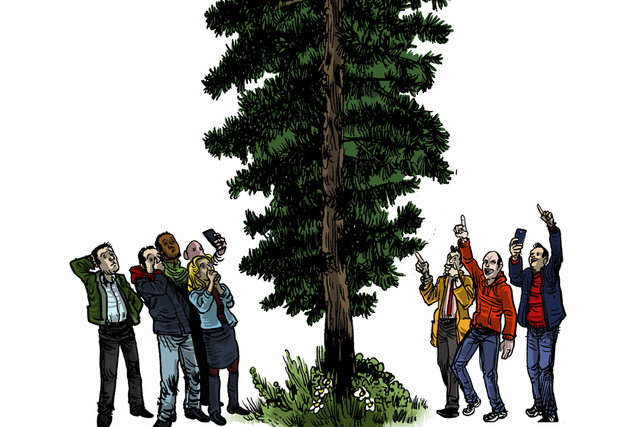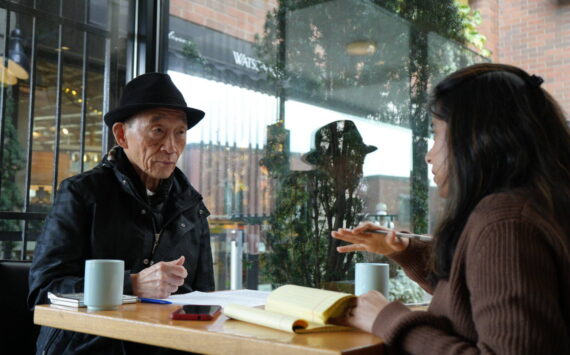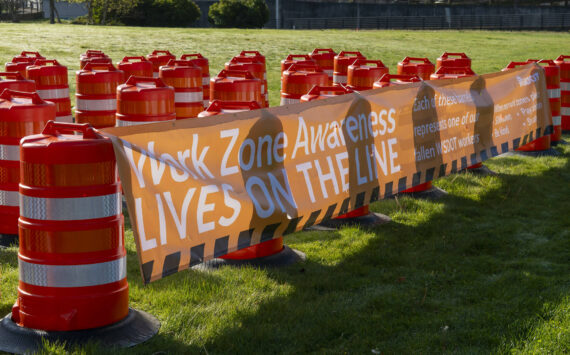By the look of things last Tuesday, one of the lumberjacks who founded this city had time-traveled to the present and, bewildered by the concrete and glass jungle around him, made a beeline toward the one familiar structure he could find: a giant tree.
“#RIGHTNOW,” tweeted KOMO news’ Gerardo Lopez, “Seattle Police are trying to negotiate with #ManInTree to come down. Avoid 2nd / Stewart.”
The Internet exploded. A line graph showing Google searches for “man in tree” spikes like, well, a tree between Tuesday and Wednesday of last week, increasing by a hundredfold. This was due in large part to a live video feed, a la The Truman Show, that KOMO news quickly set up next to the tree, and the news station’s enthusiastic promotion of their coverage on social media. According to a KOMO representative, that feed reached 420,000 viewers.
Soon enough, someone was tweeting from the account @Man_In_Tree. The jokes practically wrote themselves—with a little help from the denizens of Twitter.
Tweet: @520_bridge: Did the tree charge you a toll? #justcurious
Reply: @Man_In_Tree: Yes. If someone else would have joined me we could have climbed up in the HOV branches.
Yet no sooner did the punch lines start pouring in than a counternarrative formed, one that paused at the idea of laughing at one who appeared to be a very disturbed—if also elevated—man.
“I thought [the public reaction] was appalling,” says Seattle resident Tony Radovich, “and I wanted that [news] helicopter to go away.”
Radovich says he abhors the way Cody Lee Miller—the man in the tree—was used by the media and public. “It’s sort of like vilifying … people with mental-health issues who go to drastic things,” he says. “I don’t know the reason why he climbed the tree—I have no idea. But Washington state is the [third worst state] for lack of mental-health [beds]. So that speaks to a need.”
Between scolding from folks like Radovich and guffawing from the online peanut gallery, a confounding picture of #ManInTree emerges. For his fans on the ground, #ManInTree was a tragicomic character: clearly driven at least partly by mental-health problems (the police report says he called cops “demons,” and his mother later confirmed that he was having a mental crisis), yet at the same time that tortured drive caused him to ascend, literally and figuratively, into the heights of Seattle’s imagination.
Leaving us with a simple question: Was it wrong to laugh?
“I work in social media for a living,” @Man_In_Tree tells Seattle Weekly (the user declined to self-identify beyond the spoof Twitter handle). “I see cruel tweets and comments online all day.” The goal of the account, @Man_In_Tree says, was to focus on the positive and marginalize the negative in the strange, magical moment the man in the tree had created.
The user says there were plenty of hateful comments posted online that they chose to ignore. “By not addressing negative comments (ex. people were calling for him to jump or for others to saw down the tree) and only focusing on the fun facts associated with a dude that climbed and slept in an 80-foot-tall tree in the middle of downtown Seattle, I think the voice of the Twitter account struck a good balance.”
@Man_In_Tree continues: “On the positive end, I think people largely viewed someone climbing a tree as harmless. I mean, there isn’t really anything too exciting about someone climbing a tree … But when you add a firetruck ladder, negotiators, news cameras, and an adoring audience below, it’s just the right mix for a story everyone wants to talk about. Who didn’t want to climb a tree when they were a little kid? The freedom of facing your fears, spending time in nature, and a carefree sense of exploration. I think #ManInTree rekindled that feeling within a lot of people.”
However, for others, the jokes, and any kind of flippant treatment of the story, became more difficult to bear as the hours wore on and it became more and more apparent that this was a mental-health crisis.
“I know it has been a tough news day, but a man 60 feet up in a tree having a mental break should not be our comic relief. #sad,” tweeted Josh Trujillo, a local photojournalist and a board member of the Washington chapter of the Society of Professional Journalists.
#ManInTree is, in some ways, a perfect metaphor for where Seattle currently stands in the river of its own history. We are enraptured by our self-image as the quintessentially quirky Pacific Northwest city, full of wonderful weirdos doing beautifully bizarre things. Yet we all know, on some level, that the ground beneath our feet is, literally and figuratively, not solid. Thanks to a regressive tax system and gridlocked legislature, basic government services like mental-health treatment and public schooling are eroding like clay in the rain.
After spending 25 hours in the tree, Cody Lee Miller climbed down, ate a piece of fruit, and was put on a stretcher and wheeled away. At the time, police said their only concern was the well-being of the man and the tree. Since then, Miller has been charged with first-degree malicious mischief and third-degree assault and, as of press time, is in custody and facing $50,000 bail.
As for the avatar Miller inspired, @Man_In_Tree was still active as of Tuesday, retweeting: “Mental illness is not a crime, Seattle. Free #Man_in_Tree.”








